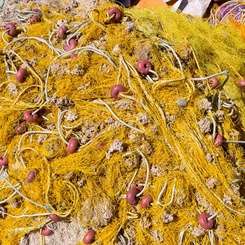Analyzing global numbers of surfers is rather problematic. This is particularly true because it is difficult to determine the proportion of beginners practicing a sport that is demanding and difficult to master after the first few hours of supervised instruction. It is estimated, however, that today one Australian out of 10 surfs on at least an occasional basis (i.e. almost 2 million people).In France, the number of surfers is estimated at approximately 150,000, and in the U.K., despite unfriendly weather conditions, there are over 400,000 surf enthusiasts. As for the U.S.A., the surf industry's top market, their numbers exceed 2 million.
Therefore, in addition to experienced and passionate surfers who live near beaches suitable for practicing this sport and consider surfing a veritable way of life, a new category of urban lifestyle surfers has emerged. These participants buy surf fashion, however, only practice the sport from time to time.
Of course, equipment expectations differ for each of these groups. Experienced surfers expect their gear to be adapted to their surfing level, their body type, their style and the waves they ride. They may own several boards suited to different wave conditions, and the intensive use to which they subject their gear makes solidity an increasingly important buying criterion.
Occasional surfers, on the other hand, will seek out fashionable and esthetically attractive boards. As these surfers do not necessarily own their equipment, they may rent from a surf shop or a surfing school where they are on vacation. The criteria of the surfshops and surfschools are usually low prices, solid build, easy to ride and with a wide range of uses (surfers with different builds and various wave sizes).
Craftsman Surfboard Shapers and Industrial Production
The surfboard market underwent sustained growth over a long period of time (from the early 1990s until the present day) and reached over 3 million units per year in 2009, which translates to total sales of more than $1.2 billion. Most of these boards are still produced by some 2,000 professional craftsmen shapers in the world, half of whom are located in the U.S.A.; however, only 10% of these builders produce over 2,000 boards per year (more than 500,000 units total per year) by using a semi-industrial approach and shaping machines.
Resins developed from industrial chemicals in the 1940s and 50s and polyurethane foam introduced by Clark Foam in the 1960s were easy to use and enabled different surfboard shapes to be tested until shortboards appeared between 1965-1966.
Today, after decades of design changes, five board models have stood the test of time. For each type of board, measurements and characteristics vary greatly. The five types of boards are: the Gun, a narrow longboard designed almost exclusively for surfing large waves; the Longboard, the iconic longboard which has enjoyed renewed interest since the early 2000s; the Shortboard, an Australian-designed, thin, narrow and easily maneuverable board; the Funboard, a longer, wider and thicker board designed for the intermediate or occasional surfer; and the the Mini-Malibu, a shortened longboard designed for beginners or occasional surfers.
But while the types of boards produced have remained largely unchanged since the late 1960s, a single moment has dramatically shaped the surfboard manufacturing industry in recent years: the closure of Clark Foam on December 5, 2005. Indeed, Clark Foam satisfied over two thirds of the global demand for foam blanks and had been the only supplier for American shapers for decades. Clark Foam's domination had even led the brand name to become the generic name for polyurethane foam blanks.
Why did Clark Foam close its doors? The California Environmental Protection Agency had begun implementing stricter regulations regarding the use of TDI (toluene diisocyanate, one of the key components for making polyurethane foam blanks and polyester resins) and solvents and were behind the shutdown of Clark Foam. Indeed, the definitive ban on using these materials would cause into question the technology used to produce 90% of surfboards. This could force Californian craftsmen shapers to switch to polystyrene-epoxy technology or see their production delocalize to geographical zones where environmental laws are less cumbersome.
The singular situation characterizing this industry caused the news to make waves outside surfing industry microcosm. Financial news media picked up the story, attracting the attention of investors who saw a fantastic business opportunity in the sector. New global actors began to emerge to compete with local craftsmen shapers:
- the American Surftech, with its new fabrication technologies (sandwich molding) added new features to the offer (a better solidity/weight ratio for surfboards, low prices, aggressive marketing) and Thai production facilities;
- the Australian Global Surf Industries, a global, multi-brand distributor with aggressive marketing;
- the French BicSport with its mastery of plastic materials,molding techniques and low prices.
At the same time, Asian manufacturers, essentially from China, emerged, offering products at low prices and playing into the game of surf shops looking for products at low costs (under private labels) so as to reestablish their profit margins on this type of product. If the quality of Asian-made products was not always up to par in the beginning, it has improved over time. In the beginning (1950s), surf shops were workshops for manufacturing surfboards, or more specifically, the showcase for these workshops - a small space to receive customers. Surfboard building done in these surf shops grew steadily; workshops were separated from the salesrooms over time.
Rid of the workshops, the salesrooms quickly began carrying accessories needed for practicing the sport: swimsuits (commonly known as boardshorts) and neoprene wetsuits.
Today, surfboards distributed by surf shops make up only a small part of sales for these businesses. In fact, 80% of a surf shop's sales come from clothing and accessories (sunglasses, bags, watches) retail; the remaining 20% are linked to the sale of neoprene wetsuits, parts (fins, leashes, etc.) and surfboards. Therefore, surfboards, which are relatively fragile to transport and cumbersome in terms of storage, have been reduced to mere decorations in certain surf shops. In fact, selling surfboards requires qualified personnel with specialized knowledge to advise clients in choosing this type of equipment. Lastly, the weak profit margins on surfboards explain attempts by some surf shops to disassociate themselves from craftsmen shapers and to have esthetically pleasing private label boards made at low cost in Asia.
Click here to access Laurent Bourgeon’s full case study (co-authored with Claire Péron): Surfboard Industry: from Local Craftsmen to a Global Industry.









